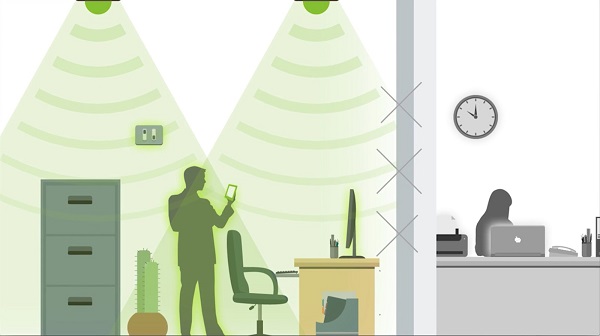On July 16, an Industry collaboration agreement that is laying the foundation for a technology that could supersede Wi-Fi and greatly benefit the IoT Industry has just been signed between Monash University Australia and Malaysia, and Australian technology company nextLiFi.
Engineering experts from Monash will work with nextLiFi to create prototypes that use Visible Light Communication, also known as Li-Fi, to transmit data. Li-Fi has the potential to transmit data 100 times faster than Wi-Fi, with better security and lower energy costs.
 |
|
Li-Fi usage demonstrating wireless data transmission with Light as a safer and faster alternative to Wi-Fi (Image: nextLiFi) |
Li-Fi technology uses light emitting diodes (LEDs) to transmit data, as opposed to Wi-Fi, which uses radio frequency. LEDs imperceptibly flicker thousands of times per second, making it possible to use them for sending vast amounts of information.
Director of Industry Engagement for the Faculty of Engineering and Faculty of IT, Madeleine McManus OAM, said that Monash was proud to be leading the way with research into this exciting new technology.
"We are committed to working with a wide range of industry partners to solve real-world problems that will have significant benefits for the future," she said.
The research will be conducted in the Monash Microwave, Antenna, RFID and Sensor Laboratory in Melbourne Australia and Kuala Lumpur Malaysia, led by highly regarded electrical engineer Associate Professor Nemai Karmakar.
"Through this international industry collaboration we are expanding our research and commercialisation horizons from microwave and millimeter wave technologies to the exciting domain of visible lightwaves, which has really strong potential to benefit the national economy," Associate Professor Karmakar said.
CEO of nextLiFi Mr. Gary Mackenzie said that the current radio frequency technology is already overburdened and that he expects the Visible Light Communication market to grow exponentially in the next few years, especially in the IoT sector due to its vast benefits with low cost, large spectrum, and security advantages.
"We're very pleased to be entering our next phase of research and commercialisation in the Li-Fi space, working alongside Professor Karmakar's team. We expect to see some exciting new discoveries as we head towards our first commercial Li-Fi applications being used in the industry within the next 24 months," he said.





 CN
TW
EN
CN
TW
EN






